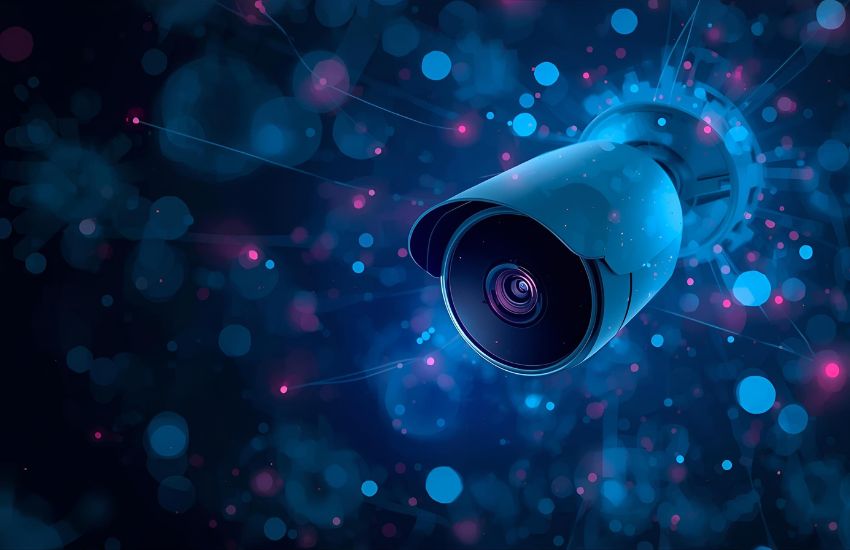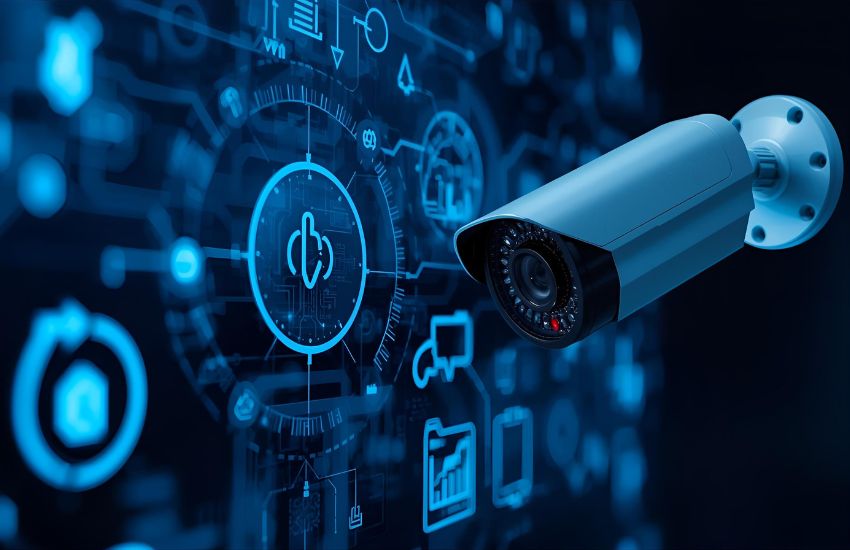Selecting the right IP camera for your surveillance system isn’t just about image clarity or advanced features—it’s about ensuring long-term compatibility, seamless integration, and reliable performance. As modern security solutions become more interconnected, the ability for devices to communicate across platforms becomes critical. This is where ONVIF-compliant cameras stand out.
Choosing an IP camera that supports ONVIF ensures compatibility with various video management systems (VMS) and devices, making integration easier. ONVIF compliance guarantees standardized communication, advanced features, and flexibility in streaming audio and video. This open industry protocol simplifies setup and future upgrades, providing a reliable and scalable security solution.
If you’re building a custom surveillance setup or planning to upgrade your current system, choosing an IP camera that aligns with the ONVIF standard can greatly reduce compatibility issues while enhancing system functionality.
How ONVIF-Compliant IP Cameras Enhance Modern Security Systems

Standardization That Ensures Seamless Integration
When deploying a modern surveillance setup, one of the most critical considerations is interoperability. Choosing an ONVIF-compliant IP security camera ensures that your device can easily integrate with a wide range of network video recorders (NVRs), video management systems, and other third-party software. By adhering to ONVIF standards, you reduce compatibility issues and future-proof your investment, especially when dealing with multi-brand systems or planning long-term scalability.
Flexibility Across Multi-Brand Ecosystems
Whether you’re using Amcrest, Dahua cameras, or expanding into brands like Hikvision, having an ONVIF camera allows for flexible integration across your ecosystem. When a camera supports ONVIF, you’re not locked into one manufacturer’s platform. This means you can easily mix and match hardware without compromising system performance. If you use ONVIF strategically, you gain access to a highly modular and customizable system that meets your specific security needs.
Centralized Management and Smarter Monitoring
With tools like ONVIF Device Manager, you can manage and monitor multiple ONVIF cameras from a single interface, streamlining system control. These cameras support various ONVIF profiles, allowing you to configure features such as motion detection, video encoding, and real-time alerts with ease. This centralization empowers you to respond faster and manage more efficiently, especially in large-scale deployments.
Enhancing System Capabilities Through ONVIF Use
Choosing to use ONVIF in your surveillance system isn’t just about compatibility—it’s about unlocking broader capability. From simplified installations with PoE to integrating wireless and WiFi solutions, ONVIF enables unified control. Adhering to ONVIF specifications ensures your system is robust, adaptable, and ready to support AI features, cloud integrations, and advanced analytics.
In short, when you opt for an IP security camera that complies with the ONVIF standards, you’re investing in a scalable, reliable, and forward-thinking security infrastructure.
See more about...4K IP Camera IR
Benefits of Using ONVIF Camera with NVR and RTSP Support

Simplified Integration Across Devices
Integrating your ONVIF camera with NVR and RTSP support creates a streamlined and future-ready surveillance setup. Whether you’re operating a residential or commercial facility, this level of integration allows you to simplify your system architecture without being tied to a single brand. Cameras that support ONVIF can seamlessly connect with various NVRs, enabling you to configure and manage feeds without compatibility concerns—even if the devices come from different manufacturers such as Reolink cameras, Vivotek, or others.
Greater Flexibility in Security Systems
Using ONVIF-supported cameras gives your security systems a distinct advantage. From high-resolution 4K surveillance to advanced wireless deployment, ONVIF ensures your system remains modular and easily expandable. You can integrate wireless solutions and add cameras that support PTZ control or access control functionalities without rebuilding the entire infrastructure. This flexibility is vital for organizations that need dynamic setups or are planning gradual upgrades over time.
RTSP and ONVIF: A Powerful Combination
RTSP (Real-Time Streaming Protocol) is critical for video and audio streaming between your camera and recording or viewing software. Pairing this with ONVIF offers a powerful foundation for IP-based video systems. You can integrate live feeds into custom dashboards, third-party apps, or remote monitoring tools. For added convenience, ONVIF cameras typically support features like easy reset options and remote configuration, helping you maintain your system with minimal downtime.
Reliable Interoperability and Long-Term Value
Although ONVIF is a standard, its value lies in the real-world application of interoperability. When you invest in compliant devices, you enable smoother collaboration between device and client, avoiding technical barriers and costly proprietary restrictions. Whether you’re managing a single cam or an enterprise-level system, the ability to integrate ONVIF-compliant devices helps future-proof your setup, especially when dealing with conformant devices across various ONVIF profiles like Profile C or Profile G.
By using the ONVIF framework with NVR and RTSP support, you’re not just building a surveillance system—you’re creating a robust, scalable, and efficient security infrastructure.
See more about...4K IP Camera with Motorized Varifocal Lens
Choosing a Wireless IP Security Camera That’s ONVIF Compliant

When selecting a wireless IP security camera for your property, prioritizing ONVIF compliance is a strategic decision that supports system flexibility, reliability, and long-term value. An ONVIF-compliant camera allows you to build a surveillance setup that can seamlessly integrate with a wide range of network video recorders and video management platforms, even across different manufacturers. This is particularly beneficial when scaling your system or replacing components without disrupting performance.
For home security, a wireless IP camera that supports ONVIF offers not only easy installation and remote access but also compatibility with professional-grade systems used in larger facilities. You’ll be able to receive real-time alert notifications, access footage from any location, and configure your device through intuitive apps or software—all while maintaining full control of your data and privacy.
ONVIF compliance ensures that your device adheres to a globally recognized set of standards, reducing setup complexity and enabling you to confidently expand or modify your security infrastructure. Whether you’re starting from scratch or enhancing an existing setup, choosing a wireless IP camera with ONVIF support ensures future-ready video surveillance systems that are secure, efficient, and easy to manage.
See more about…4K IP Camera
Conclusion
In conclusion, choosing an ONVIF-compliant wireless IP camera is a smart investment for building a reliable and adaptable surveillance system. With compatibility across brands, you gain the flexibility to expand or upgrade without being locked into a single manufacturer. These cameras support streaming audio and video, offer advanced features, and integrate smoothly with various VMS platforms, providing a powerful and customizable monitoring solution.
Whether you’re setting up CCTV for a large facility or enhancing LAN-based home security, ONVIF compliance plays a key role in ensuring interoperability between devices. This enables seamless communication, from your camera to your router to your VMS, allowing efficient control, management, and real-time alert responses.
For users seeking high-definition clarity, many ONVIF-compliant cameras also support 1080p resolution and beyond. If you’re unsure about compatibility or installation procedures, refer to the manufacturer’s FAQ page or documentation for guidance. Backed by an open industry standard, these systems are built to support evolving technologies while offering robust, secure, and flexible surveillance options for any environment.
See more about…IP Camera Streaming to a Website
Frequently Asked Questions (Why are Choose an IP Camera That Support ONVIF)
Is ONVIF needed for IP cameras?
Yes, ONVIF is important for IP cameras as it ensures compatibility between devices from different manufacturers. It allows cameras, recorders, and software to communicate using a common standard. While not all IP cameras require ONVIF, having it provides flexibility, easier integration, and better scalability in surveillance systems using mixed-brand equipment.
What are the benefits of using ONVIF?
Using ONVIF offers compatibility and flexibility among different IP camera brands and network video devices. It ensures easy integration, centralized management, and scalability within surveillance systems. ONVIF also supports standardized communication, simplifying installation and configuration. This interoperability allows users to mix and match devices, reducing costs and enhancing system performance and long-term reliability.
What are the disadvantages of ONVIF?
The disadvantages of ONVIF include compatibility issues among devices from different manufacturers, as not all follow the standard completely. Some features may not work seamlessly across brands. It can also lead to limited support for advanced or proprietary functions, potential security vulnerabilities, and frequent firmware updates may be needed to maintain proper functionality.
Which is better, RTSP or ONVIF?
RTSP is better for real-time video streaming as it directly transmits audio and video feeds from cameras to viewing software. ONVIF, however, offers broader device interoperability, enabling control, configuration, and communication between different brands. While RTSP focuses on live streaming, ONVIF provides a more comprehensive integration standard, making ONVIF generally more versatile for surveillance systems.
